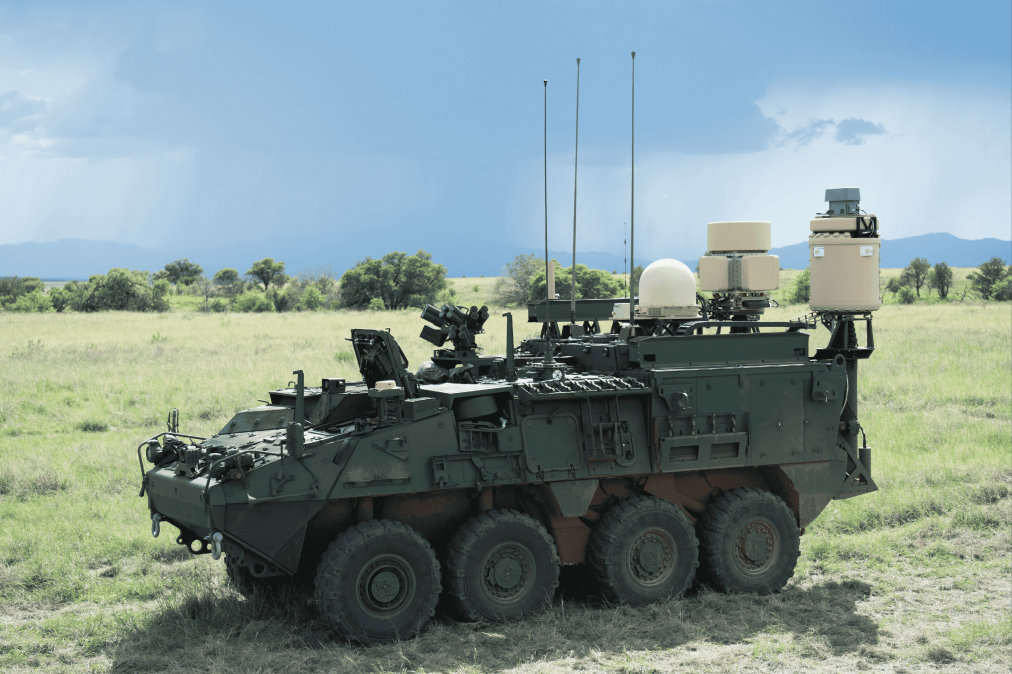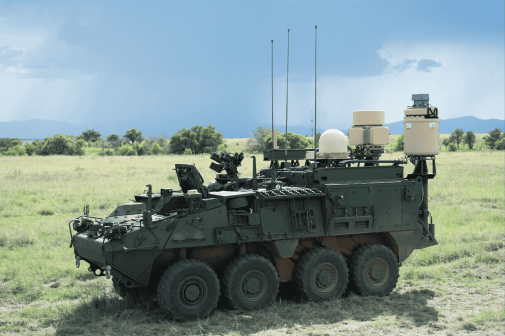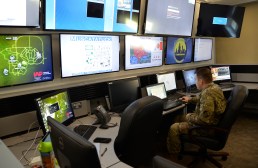Army looking at several dismounted electronic warfare concepts

AUGUSTA, Ga. — While the Army still works through a specific requirement for a dismounted electronic warfare jammer program of record, a Stryker-based system that will first be delivered next year will provided limited dismounted capability for soldiers, according to service officials.
The Terrestrial Layer System-Brigade Combat Team (TLS-BCT), the Army’s first brigade-organic integrated EW, signals intelligence and cyber platform, will be mounted on a Stryker. First unit issued is slated for the end of fiscal 2023.
To date, the Army doesn’t have any program-of-record jamming capabilities and has historically relied upon quick reaction capabilities that fill a gap identified by a commander. These have consisted of the dismounted Versatile Radio Observation and Direction (VROD) and VROD Modular Adaptive Transmission system (VMAX) — the former surveys the field from an electromagnetic perspective, and the latter provides a limited electronic attack capability.
When it comes to developing programs of record, the Army is prioritizing filling immediate gaps.
“First thing is we have to solve the immediate gap. We have to get a capability in the hands of the infantry light, dismounted BCT (brigade combat team). That comes with a manpack version of TLS,” Col. Gary Brock, director and Army capability manager for electronic warfare, said during a presentation Aug. 17 at the TechNet Augusta conference.
However, a requirements document is “making its way through” the Army, Mark Kitz, program executive officer for intelligence, electronic warfare and sensors, told FedScoop in an interview at TechNet Augusta regarding the potential for forthcoming dismounted capabilities.
“We’ve done a lot of investment in VROD/VMAX … in the past, and then as part of TLS-BCT is a requirement for a dismount capability,” he said.
He explained that the ultimate solution envisioned will have a man-packable dismount capability that can be detached from the Stryker, but officials are still working with the Army’s EW requirements generators on a final requirement to accelerate that capability.
This capability is different from what the 915th Cyber Warfare Battalion, which will conduct tactical cyber and electronic warfare operations, will use.
While they’ll be able to plug into these brigade-organic EW and cyber systems, using them to conduct more sophisticated radio frequency-type operations, the TLS-BCT dismount capability will focus on delivering more spectrum capability but underpinned by a tailorable, software-defined baseline to be able to operate in multiple theaters.
Army officials have said they are also looking at other concepts for electronic warfare, especially in the Pacific — the priority region for the Department of Defense — given Strykers will be difficult to maneuver on the terrain there, which consists of a number of islands and mountains.
“It’s a physics problem we got to think through,” Brock said.
The Army is looking at what it calls ground-launched effects, which could be a system launched from an unmanned platform or a ground tube that soldiers carry and travels tens to hundreds of kilometers. The Army is still examining specifics such as if that system should hover — and for how long — and what types of capabilities it should have such as electronic attack, electronic support or electronic protection.
But in order to make these systems successful in hostile environments, Brock said the Army must get to a truly transport-agnostic network.
“Data centric Army, data fight. How do we secure the data? How do we not care what platform or what transport the data goes across because we’re confident in the security of the data? That’s how we’re thinking about the Pacific fight right now — with dismounts,” he said.






